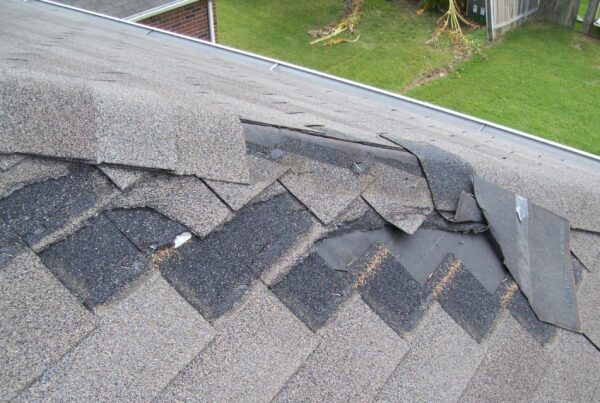Ambassadors for the Engineering Profession
By H. Alan Mooney, P.E (Founding President of National Academy of Building Inspection Engineers), 1993 (updated 2007)
The following is not just an idea; it is what happens everyday. However, as engineers, typically, we do not embrace the concept with the confidence that our profession deserves. Perhaps, as Building Inspection Engineers, if we expand our thinking and adopt this as our purpose, we can contribute to the engineering profession while we reinforce our own self-esteem; a true win-win opportunity.
Does the public know what a Professional Engineer is? All too often the answer is, no. Today, however, the engineering profession has a new ambassador, the Building Inspection Engineer.
While the general public encounters the work of the engineer every day, few understand the skill, knowledge and professionalism required to be an engineer. As the 2002 National Engineers Week theme stated, “Without engineers, the world stops.” How many people actually realize that? How many people know why? Regrettably, but necessarily, most engineers spend their time in design, research, industrial or governmental environments that isolate them from the general public.
Such isolation does little to enhance the public perception of the engineer despite the fact that one of the most important elements of the engineering code of ethics is to “use one’s knowledge and skill for the advancement of human welfare.” While many projects created by engineers serve humanity by improving the quality of life, few people realize the source of those creations. Fewer still are aware of the educational and experiential hurdles one must overcome to qualify as an engineer. An engineer does not take lightly his or her obligation to the “advancement of human welfare.”
The engineering profession must be more aggressive in educating the public about the importance of engineers in our society. Otherwise, the esteem granted the engineer will continue to erode. Each of us, as engineers, must recognize our responsibility as representatives of the profession and seize every opportunity to educate the public. For many of us that means stepping out of our day to day routine to seek out opportunities, such as speaking to schools and civic groups. For some of us, however, the opportunity presents itself everyday, in our normal routine.
Building Inspection Engineers have a unique opportunity as ambassadors for the engineering profession. A residential or commercial building inspection takes a few hours to complete. A typical Building Inspection Engineer will make contact with at least ten new people, typically non-engineers, each week. That’s more then 500 a year! Add in the real estate agents, attorneys, bankers and appraisers associated with each inspection and a typical Building Inspection Engineer will make contact with well over a thousand new people each year. Word of mouth from each direct contact reaches many thousands more. All from the activities of just one Building Inspection Engineer!
Each one of those contacts is an opportunity to demonstrate the professionalism, ethics, integrity, accountability and competence of a Professional Engineer. Few other engineering activities offer such an opportunity.
Further, each building inspection is challenge to an engineer’s skills. As “general practitioners,” Building Inspection Engineers must be masters of a variety of skills, able to think on their feet, possess good judgment, be able to diagnose problems, and communicate effectively. A competent, thorough building inspection is an exciting challenge, even for the best engineer.
While building inspections may be seen by some as not needing an engineer, the complexity of construction, the material used, the quality of workmanship and the demands of our environment weaken such arguments. Some say, “you don’t need a surgeon to put on a Band-Aid.” The building inspection Engineer counters by pointing out that a patient (client) deserves the knowledge of a surgeon (engineer) to confirm that a band-aid is all that is needed.
Building inspections is a growing industry. Our infrastructure is aging. All buildings, large and small, need periodic evaluation and attention. Also, there is more demand for due diligence during real estate transactions. However, there is very little regulation of the home and building inspection process. ASTM has created a standard for Property Condition Assessments (PCA) of commercial buildings and several national associations have developed residential inspection standards but, in all cases, compliance is voluntary.
Many would argue that a building inspection is the practice of engineering and, therefore, should be provided only by a Professional Engineer. The majority of the practitioners, however are non-engineers. Many of them commonly, but perhaps unknowingly, practice engineering as part of the normal course of their work. Nationally, there are numerous examples of non-engineers providing engineering services under the guise of a home or building inspection. This includes such things as structural evaluations, soils evaluations, heating capacity analysis and performance deficiency determinations. Numerous conflicts of interest are also evident. For example one individual provided an inspection, identified a foundation problem, designed the repair, and then, taking on his contractor’s role, fixed the problem. All of this by a non-engineer!
There are also many examples of non-engineers neglecting serious safety issues, safety related code deficiencies, fire hazards and hazardous materials, all of which would normally be part of an inspection by an engineer but excluded by some industry standards used by non-engineers. The client is not well served. “Human Welfare” does not get the priority it deserves.
A mutually beneficial partnership seems inevitable. Building Inspections Engineers can serve as ambassadors for the engineering profession while other engineers, not regularly engaged in building inspections, can advocate the importance of using licensed, Professional Engineers to evaluate our homes and commercial buildings.
When next you hear someone talking about home or building inspections, urge them to use a licensed, Professional Engineer. Explain the training and experience required to become an engineer. Explain the benefits of working with a professional, licensed by the state, obligated to uphold a code of ethics that places “human welfare ahead of all other considerations.” In return, you – the engineering profession – will get an ambassador for the profession, someone who will serve that client in a way that justifies your pride in the profession. And the esteem accorded the profession will be enhanced.
Building Inspection Engineers are the front line in the battle to maintain and enhance the image of the engineer on our society. Building Inspection Engineers are proud to accept the role of ambassadors to the engineering profession.
The author, H. Alan Mooney, P.E. has been a Building Inspection Engineer for almost 40 years. He is a licensed, Professional Engineer in eight states. He is president of Criterium Engineers, a consulting engineering firm that specializes in building inspections, and remains an active contributor and member of NABIE.
*This article had been posted in the Spring 2011 edition of The Examiner.


